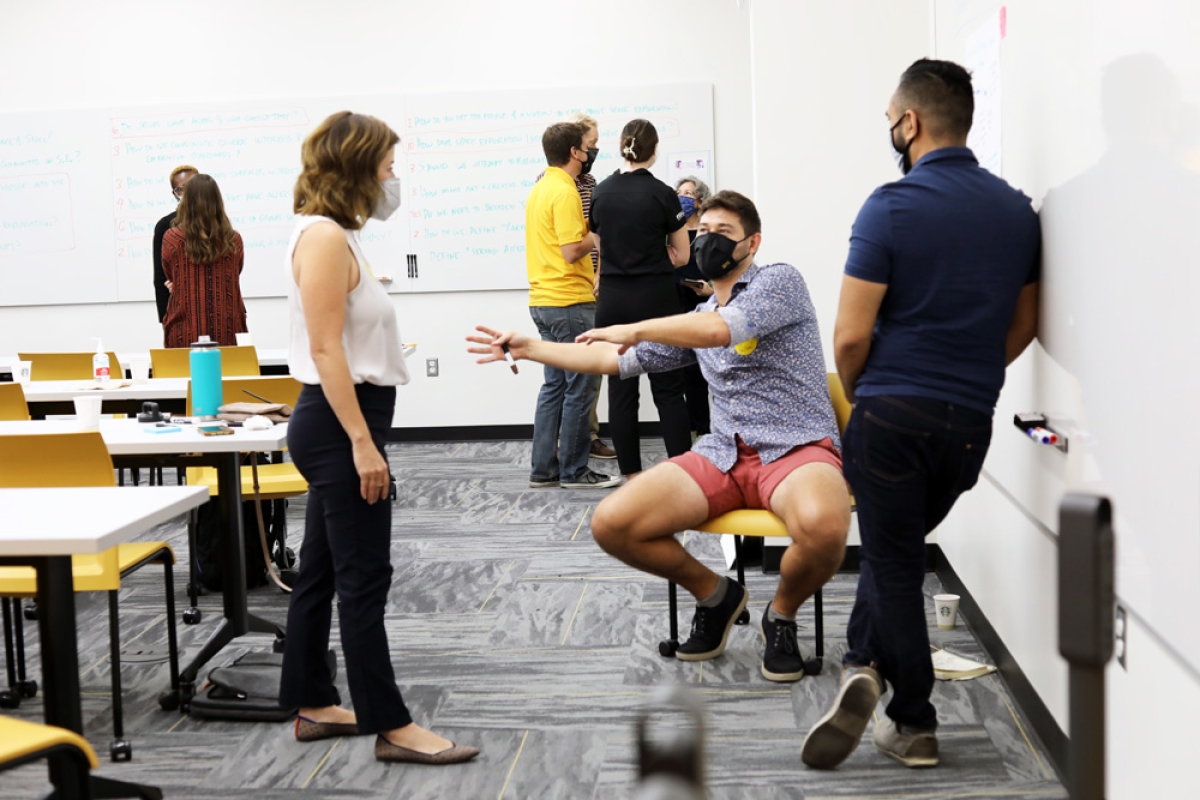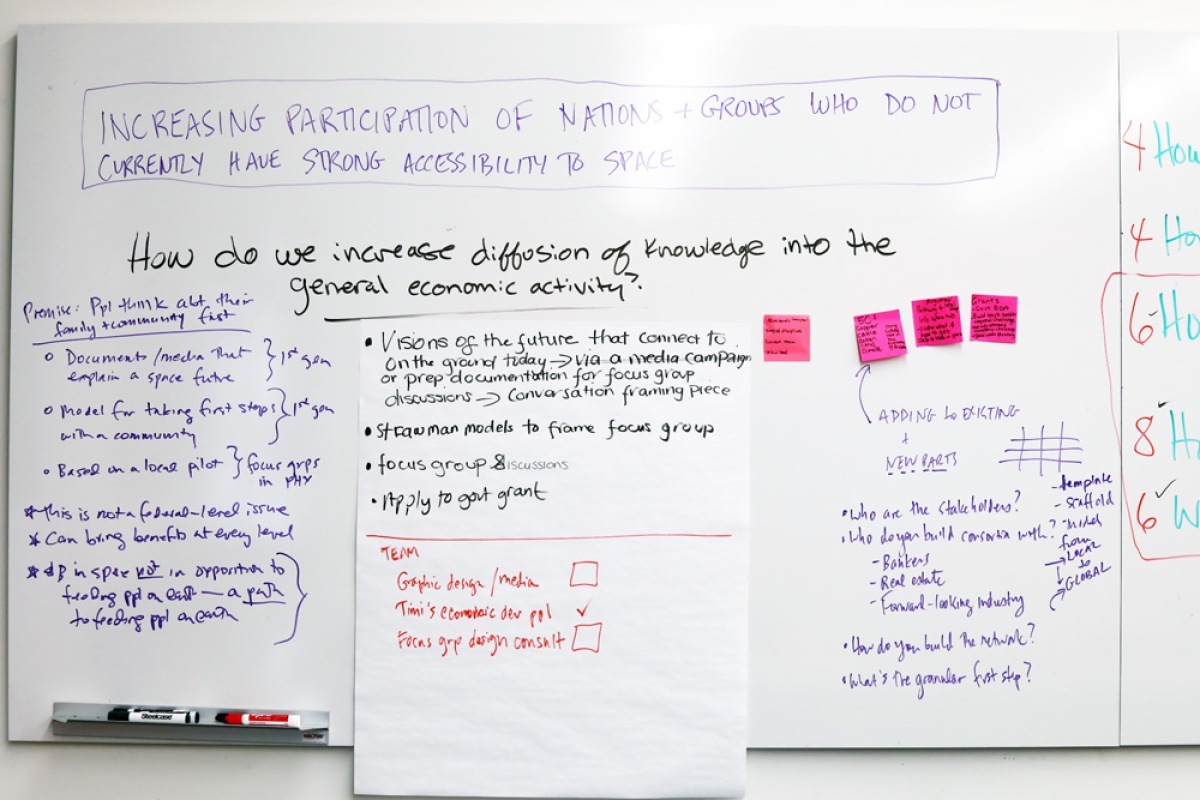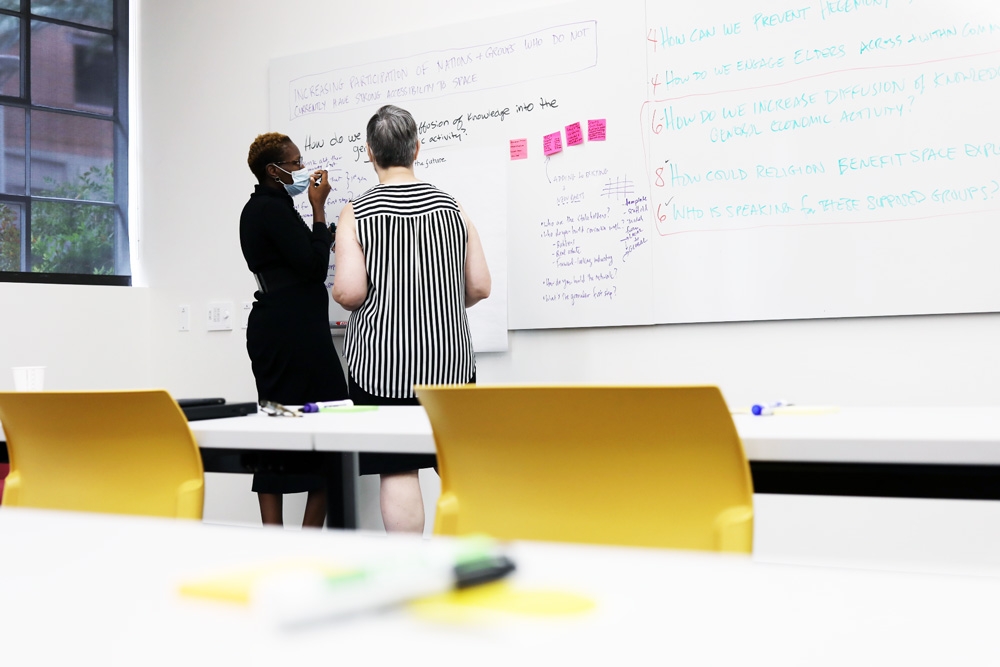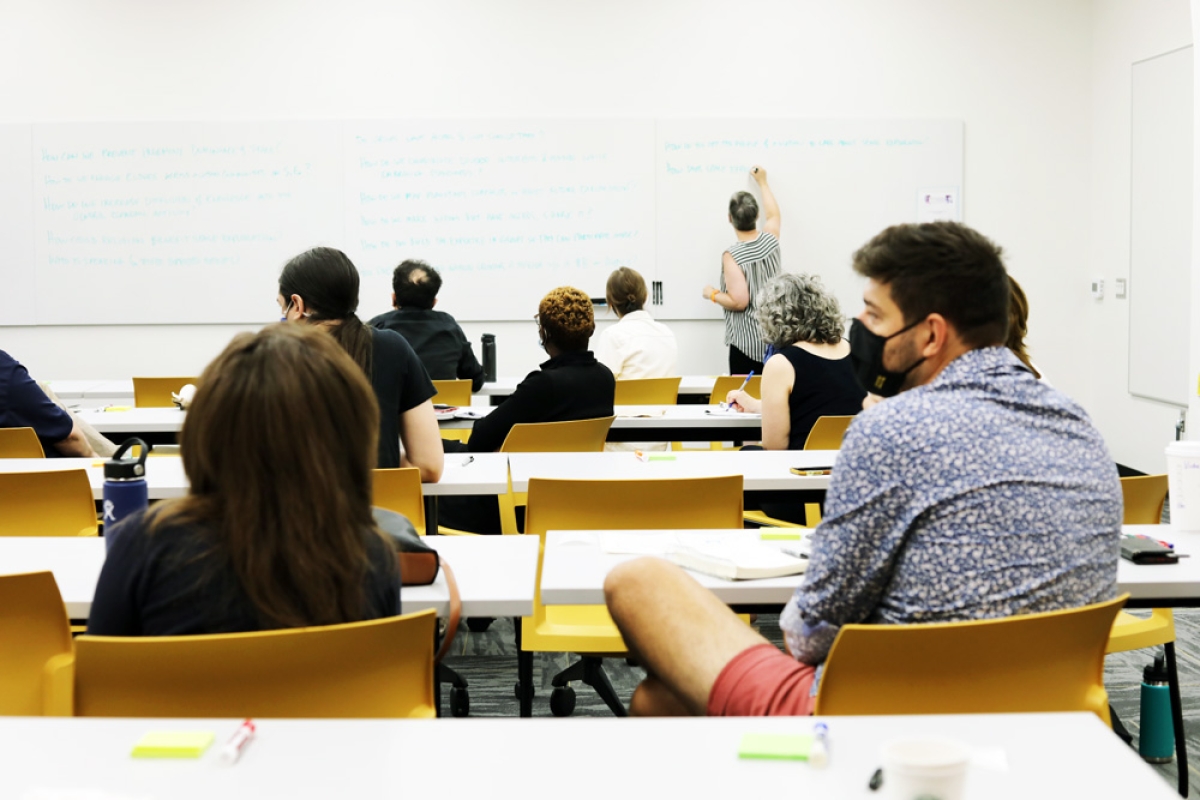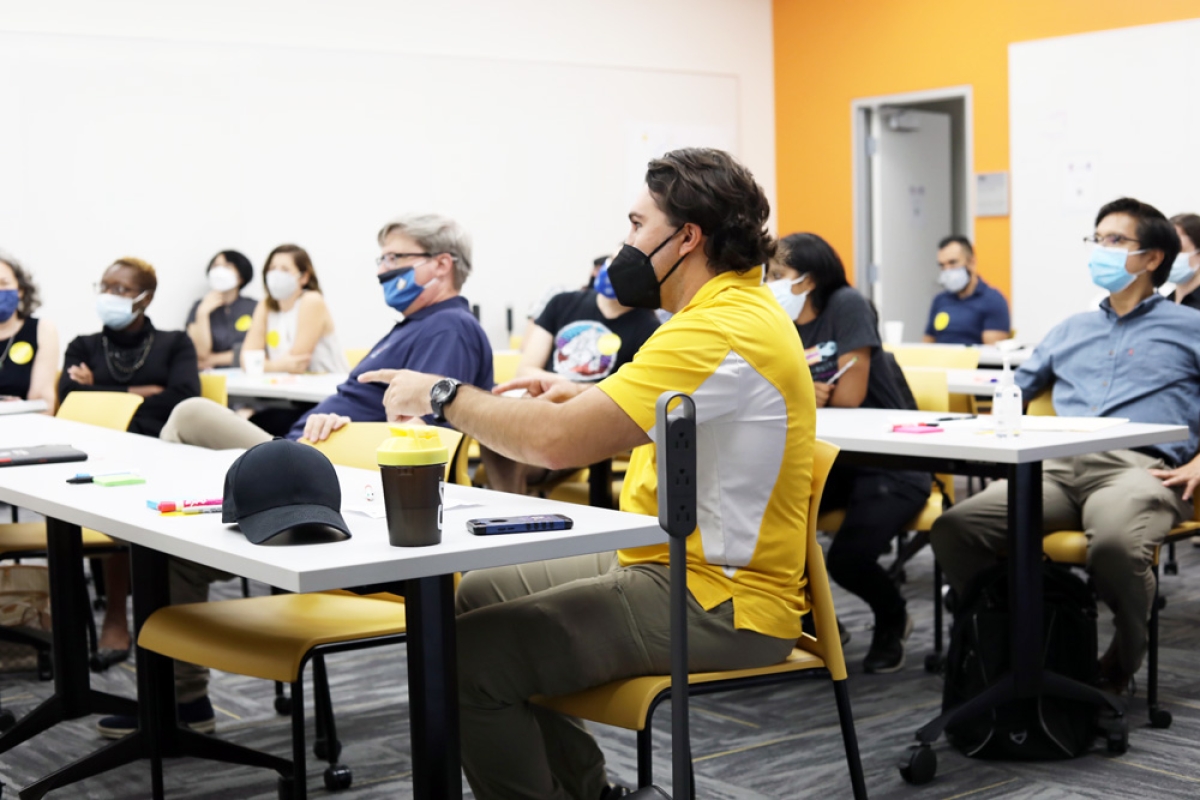Interplanetary Initiative creates space for creative thinking
'Big Questions' workshop focuses on access to space exploration

The air was buzzing with the sound of bright minds brainstorming processes to solve hurdles to space accessibility at the Interplanetary Initiative’s "Big Questions" workshop on Sept. 24.
With its signature event, the Interplanetary Initiative brings people across disciplines together to begin to develop projects for which they can then apply for funding from the initiative.
Participants included Arizona State University faculty, alumni, current undergraduate and graduate students, and instructors. Participants came from the School of Geographical Sciences and Urban Planning, College of Integrative Sciences and Arts, and Ira A. Fulton Schools of Engineering, to name a few. The interdisciplinary nature of the workshop is key. The idea is that creative solutions are more likely to succeed because there are so many different disciplines approaching the process.
The process begins with a broad question, which is narrowed as the event goes on. This year, organizers posed the question: “How do we increase the participation of nations and groups who do not currently have strong accessibility to space?”
The event was facilitated by Lindy Elkins-Tanton, Interplanetary Initiative vice president and principal investigator of NASA’s Psyche mission, who invited participants to pose questions whose answers would get us closer to answering the overarching question. That exercise yielded more than a dozen questions. Each participant got three votes to choose the questions that most interested them, and that narrowed the field down to just five. The process of refining the areas of interest was designed to make sure everyone could connect to one of the projects.
“It’s about trying to narrow projects to where the most interest is, so that you then have enthusiasm when people have to pick a project based off a question that they might not have been the one who asked,” said Jonathan Roll, a master’s degree student in science and tech policy.
Facilitators wrote the chosen questions on the classroom’s whiteboards, and participants were invited to choose one of the questions to work toward solving.
Then, in groups, they laid out a one-year plan that they could implement to work toward a solution to their question. Some of the questions were: “What can we learn from religion and spirituality to create a greater connection to space exploration?” and “How does space exploration intersect with sustainable development goals?” The teams were tasked with determining concrete milestones they could achieve throughout the year, as well as with identifying other disciplines that would be needed in order to accomplish their milestones.
The whole process took less than two hours, which some participants agreed broke down barriers to creative thought.
“I absolutely believe in speed being a creative constraint for the imagination. That kind of energy helps to erase people’s hesitancy toward feeling like they don’t have enough expertise or they don’t have enough buy-in or understanding to do something,” ASU instructor Phil Stoesz said.
The teams now have the option to move forward with their projects and pitch them to the Interplanetary team to be considered for pilot funding. Past projects that are renewed for fiscal year 2022 include Five Senses in Space and Earth Operations.
The Big Questions process helps the Interplanetary Initiative drive forward the future of space, but it works for any human endeavor.
“The process has no topic limitation and works great for forming interdisciplinary teams. The arts, science, tech … they can all benefit from an innovative process that shakes up the approach teams usually take to generate solutions,” said Big Questions facilitator Abigail Weibel.
If you’re interested in learning how to run your own Big Questions workshop, email interplanetary@asu.edu.
More Science and technology

The science behind chronic stress
Stress comes in many shapes and sizes. There’s the everyday stress of preparing for a final exam or being stuck in traffic. And…

ASU planetary scientist to be inducted into the National Academy of Sciences
The National Academy of Sciences is inducting School of Earth and Space Exploration Director Meenakshi Wadhwa into the 2023 class…

Unlocking the potential of AI for homeland security
“Can we do what we're doing now cheaper, more efficiently, more effectively?” Adam Cox, director in the Office of Strategy and…
